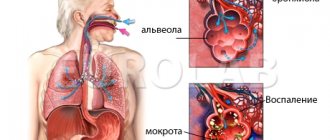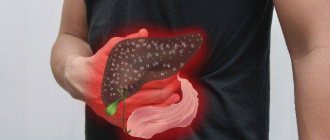West Nile virus (WNV) can cause neurological disease and death in humans. WNV is commonly found in Africa, Europe, the Middle East, North America and Western Asia. In nature, WNV is maintained through a cycle involving transmission of the virus between birds and mosquitoes. People, horses and other mammals can become infected.
West Nile virus (WNV) of the genus flavivirus belongs to the Japanese encephalitis antigenic complex of the family Flaviviridae.
General information
The viral disease West Nile fever was first discovered in Uganda in 1937. Today it is widespread on many continents - many outbreaks are recorded in the USA, in the countries of the Mediterranean coast, and the modern form of the virus is also quite common in Indonesia, former CIS countries, in the south of Russia. The pathogen is most viable in tropical and subtropical climates. The disease is transmissible - transmitted by blood-sucking arthropods, in this case mosquitoes, ixodid and argasid ticks. It is seasonal: infection most often occurs from May to October - the period most favorable for the development of mosquitoes.
Virus distribution diagram
The disease is an acute zoonotic disease, also called West Nile encephalitis or duck fever . Distinctive signs are multiple inflammation of the lymph nodes ( polyadenitis ), serous inflammation of the meninges and skin rashes, and in rare cases, meningoencephalitis .
Treatment
Treatment of patients with obvious signs of West Nile fever is carried out in the infectious diseases department of the hospital. In severe cases, with an increase in neurological symptoms, patients are hospitalized immediately in the intensive care ward of the intensive care unit. Medical workers must intensively monitor the condition of patients and monitor the performance of the heart, respiratory system, and kidneys. To do this, they should regularly measure blood pressure, pulse, rhythm, frequency and depth of breathing, hourly and daily diuresis, and body temperature.
Patients are prescribed strict bed rest for the entire febrile period until signs of central nervous system damage disappear permanently. Such patients do not need to follow a special diet. They are recommended to have a light, gentle diet and drink enough fluids.
Causative therapy for WNV has not currently been developed. Patients are given symptomatic treatment to alleviate the general condition. The drugs of choice are:
- Antipyretics - Nurofen, Paracetamol,
- Painkillers – “Analgin”, “Bral”,
- Vasoprotective and nootropic – “Piracetam”, “Vinpocetine”,
- Sedatives – “Phenazepam”, “Clonazepam”,
- Diuretics - Lasix, Mannitol,
- Anticonvulsants – “Hexamidine”, “Carbamazepine”,
- Antioxidants – “Actovegin”, “Glycine”.
Seriously ill individuals are given infusion therapy by parenteral administration of detoxification solutions - colloidal and crystalloid. These medications not only remove toxins from the body, but also correct electrolyte imbalances and restore blood osmolarity. Patients with severe forms of pathology are prescribed hormone therapy. Corticosteroids have a powerful anti-inflammatory effect, reduce the permeability of the vascular wall, and suppress the migration of leukocytes. Dexamethasone and Prednisolone are usually used. Such patients are indicated for oxygen therapy - inhalation of humidified oxygen. If a secondary bacterial infection is suspected, broad-spectrum antibiotics are prescribed. Patients with neuroinvasive disease often require assisted mechanical ventilation.
Pathogenesis
The mechanism of infection after the virus enters the bloodstream occurs along the path of hematogenous dissemination. As a result of viremia, the pathogen is detected in brain tissue. A tropism was revealed not only for neurocytes and cardiomyocytes, but also for vascular endothelial cells.
In response to infection, a perivascular lymphoid infiltrate is formed in the body. Neurocytes undergo dystrophy and necrosis. As a result of vascular damage, edema and swelling of the brain, local and generalized manifestations of thrombohemorrhagic syndrome are aggravated.
The virus is capable of long-term persistence in the human body. After the disease, persistent post-infectious immunity and no repeated cases have been recorded.
Transmission of infection
Infection in humans most often occurs as a result of the bites of infected mosquitoes. Mosquitoes become infected by feeding on the blood of infected birds; the virus circulates in their blood for several days. The virus eventually enters the mosquito's salivary glands. During its subsequent feeding on blood (during mosquito bites), the virus can enter the body of people and animals, where it can multiply and lead to illness.
The virus can also be transmitted through contact with other infected animals, their blood or other tissues.
A very small proportion of human infections occur through organ transplants, blood transfusions and breastfeeding. One case of transplacental transmission of WNV (from mother to child) has been reported.
To date, there are no documented cases of person-to-person transmission of WNV through non-hazardous contacts and no cases of transmission of WNV to healthcare workers when standard infection control precautions are followed.
Cases of transmission of WNV to laboratory workers have been reported.
Causes
The cause of West Nile fever is the spread of an RNA-containing flavivirus, spherical in shape and only 20-30 nm in size.
West Nile virus model
The pathogen is able to survive in frosty and dry conditions; temperatures above 56 degrees Celsius are destructive; ether and deoxycholate are required for inactivation. The reservoir is birds and rodents.
Spreading
The first diagnosis of Nile fever was made in 1999 in Uganda. Until the early 70s, residents of equatorial Africa developed immunity and the virus spread to tropical regions. As a result of tourism, the disease spread to non-tropical regions and was introduced to the United States in 1999. Today, natural foci have been found in the Mediterranean countries, in Armenia, Azerbaijan, Moldova, in southern Ukraine, in the southern European part of Russia and other countries in this strip.
Map of the global spread of West Nile virus
In Russia, the first significant threat was in 1999, when West Nile fever in Volgograd affected more than 700 people, mainly affecting elderly people over 60 years of age, with 9 deaths.
By September 2021, more than 400 cases were registered, which is 2 times more than in previous years, and the disease occurred without symptoms of fever.
Natural foci most often form in suburban areas; they have been identified in the Astrakhan, Rostov, Voronezh, Lipetsk, Saratov and Volgograd regions, Krasnodar and Stavropol Territories, as well as in Tatarstan.
However, due to climate change, there is an increase in outbreaks of the disease. Thus, in Saratov, due to a decrease in the cold period, an increase in precipitation, and an increase in average temperatures, a favorable environment has been created for the development of foci and circulation of West Nile fever viruses. In the Saratov region, Rospotrebnadzor warns of danger and informs about preventive measures - the need to mow weeds, clean and drain basements, eliminate landfills, and install mosquito nets.
Prevention
Preventing transmission among horses
Because human cases are preceded by outbreaks of WNV in animals, it is necessary to establish an active animal surveillance system to detect new cases of infection in birds and horses. This is critical to provide early warning to veterinary and public health authorities. In America, notifying local authorities of dead birds is important to assist the community.
Vaccines for horses have been developed. Treatment is supportive and in accordance with standard veterinary practices for animals infected with viral pathogens.
Reducing the risk of human infection
In the absence of a vaccine, the only way to reduce the number of infections among people is to increase awareness of risk factors and educate people about the measures they can take to reduce exposure to the virus.
Health education should include the following messages:
- Reducing the risk of mosquito transmission. Efforts to prevent transmission should primarily focus on personal and community protection from mosquito bites through the use of mosquito nets and personal repellents, wearing light-colored clothing (long-sleeved shirts and trousers), and avoiding exposure to outdoors during peak mosquito bite times. In addition, programs should be implemented to encourage communities to eliminate mosquito breeding sites in residential areas.
- Reducing the risk of transmission of infection from animals to humans. Gloves and other protective clothing should be worn when handling sick animals or their tissues and during slaughter and culling procedures.
- Reducing the risk of infection transmission through blood transfusion and organ transplantation. During a disease outbreak in affected areas, restrictions on blood and organ donations and laboratory testing should be considered after assessing the local/district epidemiological situation.
Vector control
Effective prevention of WNV infections in humans depends on the development of comprehensive, integrated mosquito surveillance and control programs in areas where the virus occurs. Research is needed to identify local mosquito species implicated in WNV transmission, including those species that may serve as a “bridge” between birds and humans. Particular attention should be paid to comprehensive control measures, including source reduction (with community participation), water management, chemicals and biological control methods.
Prevention of infection in health care settings
Health care workers caring for patients with suspected or confirmed WNV infection or handling specimens collected from them should take standard infection control precautions. Specimens from humans and animals suspected of WNV infection should be handled by trained personnel in appropriately equipped laboratories.
Symptoms of West Nile fever in humans
From the moment of infection to the appearance of the first symptoms, 3-21 days can pass - this is the duration of the incubation period. The disease in humans begins acutely with hyperthermia (body temperature remains 38-40°) and chills . The fever flares up and then subsides, and can last only 1-2 days, but more often 5-7. Its harbingers are often such short-term phenomena as:
- general weakness;
- lack of appetite;
- increased sweating ;
- myalgia (especially pain in the calf muscles);
- headache.
, serous meningitis occurs . As a result, patients develop a fragmentation of mild meningeal symptoms in the form of stiffness of the neck muscles, Kernig and Brudzinski symptoms, inflammatory changes in the cerebrospinal fluid - the development of pleocytosis , a slight increase in the amount of protein. Focal scattered microsymptoms from the nervous system develop, including horizontal nystagmus , palmomental symptom, diffuse decrease in muscle tone, deterioration of tendon and absence of abdominal reflexes.
Rare encephalitic manifestations are replaced by signs of mixed somato-cerebral asthenia ( sweating , insomnia , general weakness, mental depression, weakened memory are observed), which are caused by West Nile fever. Symptoms of intoxication are expressed as:
- severe painful headache, especially in the forehead and eyes, as well as pain in the neck and lower back;
- pain, discomfort and cardiac arrest;
- pain and swelling of the joints;
- hyperemia of the skin and in 5% of cases – maculopapular rash;
- repeated vomiting, lack of appetite, diarrhea and other dyspeptic disorders;
- hyperemia of the conjunctiva and uniform injection of the vessels of the eyeballs;
- hyperemia and granularity of the mucous membranes of the oral cavity;
- arterial hypotension;
- hepatolienal syndrome;
- polylymphadenitis – peripheral lymph nodes are enlarged, their sensitivity and slight pain;
- in rare cases, the nose becomes stuffy and a dry cough begins.
The clinic is accompanied by minor changes in laboratory parameters - an increase in ESR, slight leukocytosis .
Symptoms of West Nile fever in children often resemble tick-borne encephalitis . The disease is tolerated much more easily by children than by elderly people or people with weakened immune systems.
Tests and diagnosis of West Nile fever
The reasons for suspecting West Nile fever are the characteristic clinical picture and epidemiological history.
Serological studies do not provide completely reliable results, since flaviviruses have a close antigenic relationship and the detection of antibodies in blood serum is due to the circulation of another type of virus.
Diagnosis is carried out by isolating MK-2 cells from cultures and intracerebral infection of mice. To identify West Nile virus, fluorescent antibodies and species-specific luminescent immunoglobulins are used.
Laboratory tests of cerebrospinal fluid reveal:
- lymphocytic pleocytosis 100-2000×106/l;
- slight increase in the amount of proteins.











